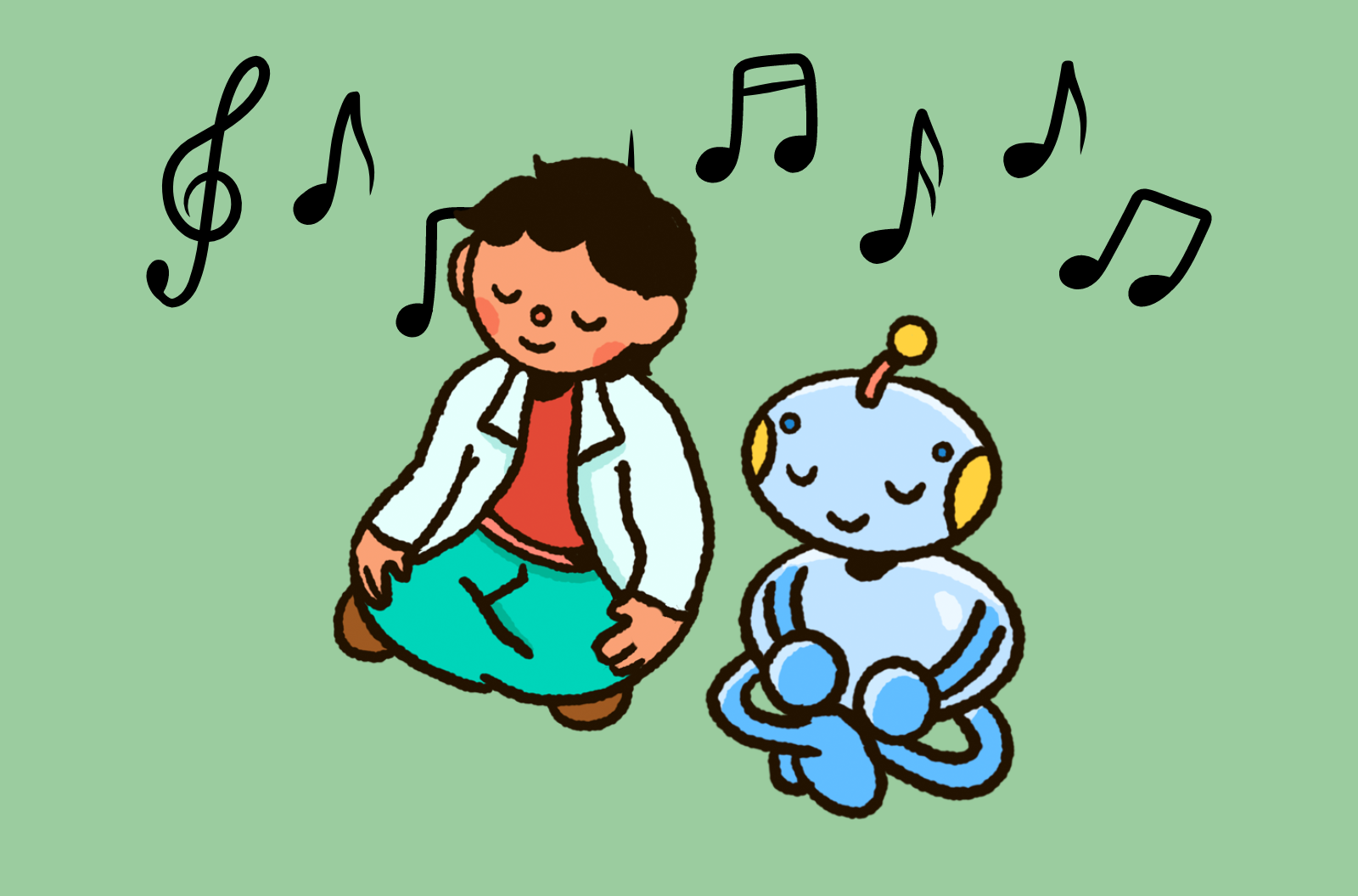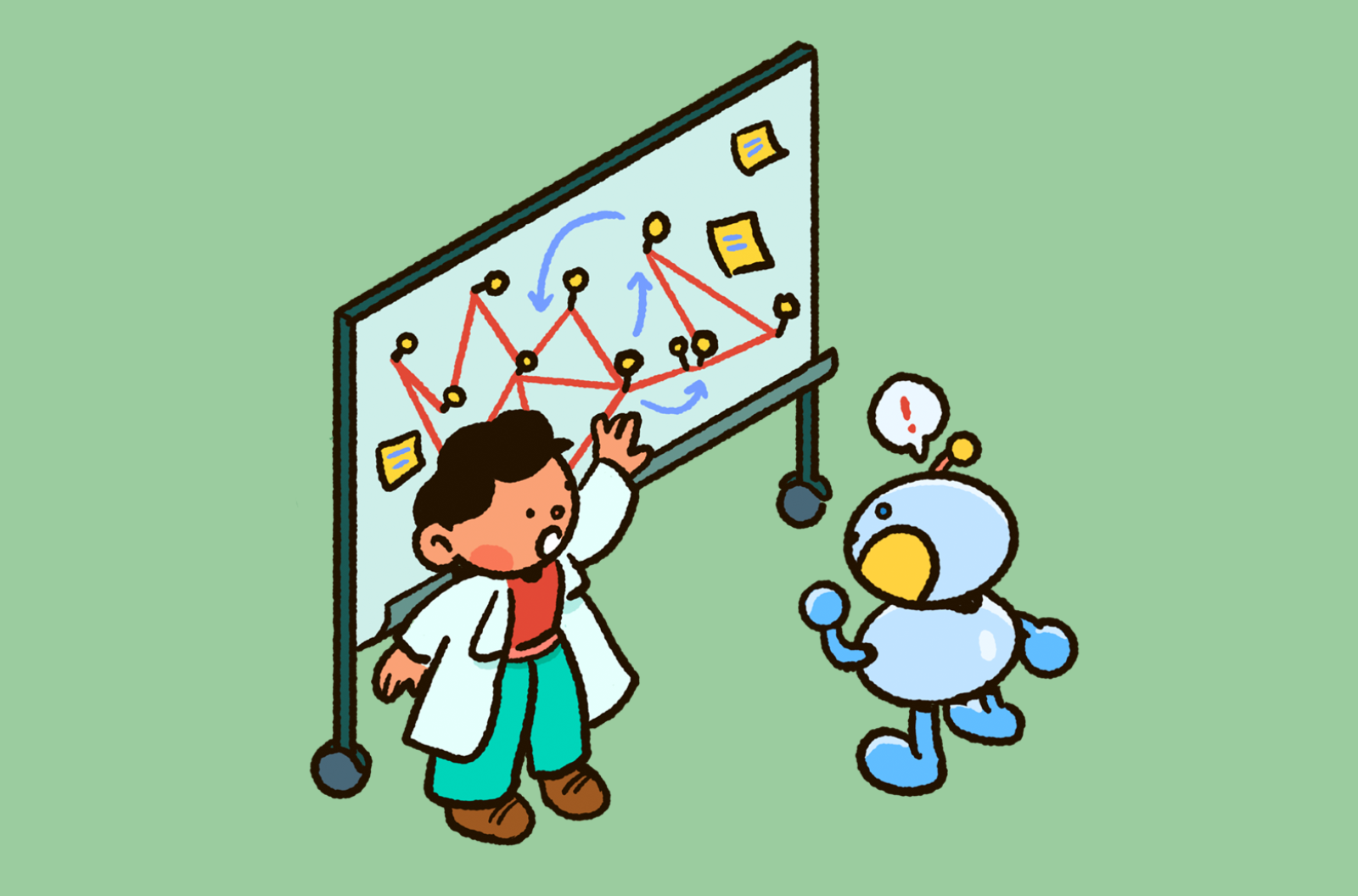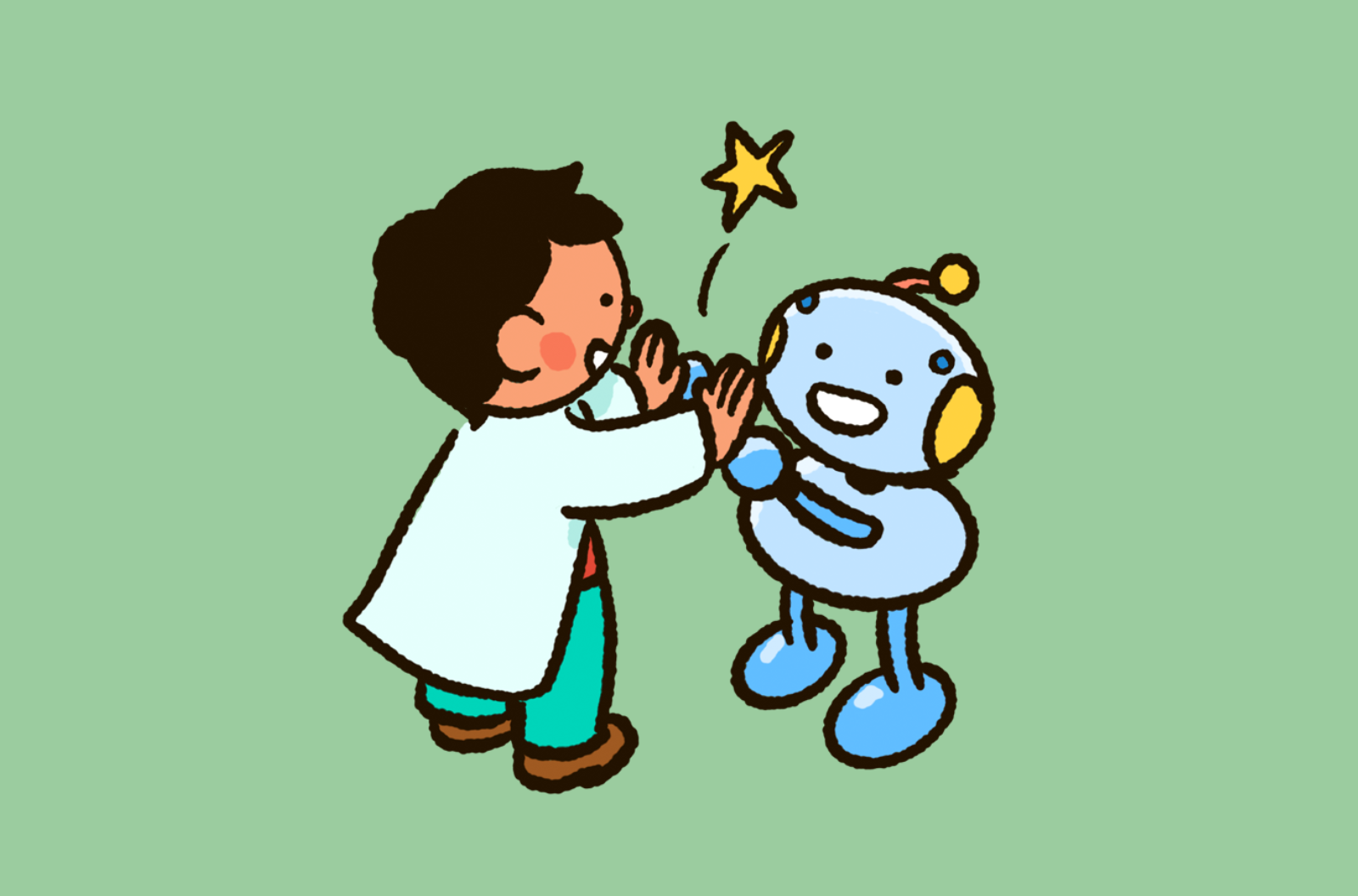Grade Level
6 - 8
minutes
1-3 hours
subject
Life Science
stem practices
Planning and Carrying Out Investigations
Activity Type:
STEAM, family activities, After School Activity, brain, neuroscience
This story, the challenges, and the puzzles are part of the Hack Your Brain online escape room adventure. Este recurso está disponible en español. This resource is available in Spanish.
Get all the fun sent to your inbox for Brain Awareness Week, March 10-16. RSVP today!

Once Upon a Time…
It is a dark and dreary day, with rain pelting against the windows. Nothing exciting is happening. Your friends are all busy, and no one responded to your texts. You should study for a test later this week, but what fun is that?
As you sit on your bed, you scan your room, looking for something to do. You see a pile of paperclips on your desk, leftover from another project. Grabbing them, you bend the paperclips and attach them to one another. Before you know it, you’ve built something that looks kind of like a tiny robot.
 Smiling, you get an idea! You put on your virtual reality (VR) headset. Maybe you can use the app to animate your paperclip robot.
Smiling, you get an idea! You put on your virtual reality (VR) headset. Maybe you can use the app to animate your paperclip robot.
As you enter virtual reality, your bedroom is replaced with a high-tech laboratory. Your avatar wears a lab coat—that’s right, you’re the scientist in charge! Suddenly, you notice a slight movement from your desk. Your paperclip creation looks like a real robot now! Pointing at it with your controller, you tap the virtual robot to activate the animation.
It seems to blink. You step back, shocked. This is easier than you thought it’d be! The robot wiggles a bit and looks up at you. “Hello,” it says. “My name is ClipBot. What is your name?”
Challenge!
Find some leftover paperclips or other craft materials and make your own ClipBot. Post a picture in the Hack Your Brain community!
Hack Your Brain: Unlock The Science Of Your Mind
Motor Control And Movement

In disbelief, you reply with your name. ClipBot nods, and looks curiously around your virtual lab. “What do you like to do here?” it asks.
You respond, “I don’t know. Sometimes I make inventions, sometimes I play games online with my friends, or do dance challenges.”
“Dance challenges?” ClipBot looks confused. “What is a dance challenge?”
“Well,” you reply, “you watch a dance video and then try to copy the moves.”
ClipBot responds, “I do not know how to dance.”
You use your VR controller to open a dancing game, transforming the lab into a club with flashing lights and music. Can you teach ClipBot how to dance?
Challenge!
Visit the activity below to learn how the brain controls your body, and complete the first puzzle. Enter your first secret code in the Science Friday Enigma Machine.
💪 Discover How Your Brain Builds Muscle Memory
Investigate the brain’s ability to coordinate movement, develop motor skills, and create muscle memories. Materials needed: a jump rope (or equivalent), printable grid and cards (download included).
Stress And Coping Skills

Exhausted from dancing with ClipBot, you flop down on the floor of your room. Of course, ClipBot doesn’t know what it means to be tired; it wants to keep dancing! You sigh and roll your eyes. ClipBot is just like a little kid.
“Enough dancing for now. I need to do my homework and study,” you explain. You open your virtual biology textbook to the chapter on the brain. Watching you, Clipbot starts asking questions.
“What is a brain? What does it do? How does it work? Why do humans have a brain? I don’t have a brain!”
You get frustrated pretty quickly and shout, “Leave me alone! I have to study, and you’re stressing me out!”
ClipBot is confused. “What is stress?” it asks. Sighing again, you put away your book and think to yourself, “How do I explain this?”
Challenge!
Visit the activity below to learn about stress and how to cope with it, and complete the second puzzle. Enter your secret code in the Science Friday Enigma Machine.
😨 Train Your Brain To Manage Stress
Discover brain-based approaches to develop resilience, manage stress, and cultivate a positive mindset. Materials needed: a set of Jacks (or equivalent), printable cards (download included), either red film or a mirror.
Making Memories

You take a deep breath and release it slowly. ClipBot cocks its head to the side and tries its best to copy your actions. Robots look silly when they meditate.
“Ok, ClipBot. I’m sorry I yelled at you, but I have to memorize a lot of vocabulary to get ready for my test.”
Uh oh. ClipBot looks confused again. “What do you mean by memorize?” ClipBot explains that when it needs to learn something, it just downloads information from the internet onto its hard drive. It’s so much easier for ClipBot!
“Well, it’s not easy for me,” you explain. “No matter how many times I read this textbook or how many hours I study, the information never seems to stick. Maybe I’m just not good at biology.”
ClipBot smiles. “I will download information on how memory works so I can help you!”
You’re not sure if you should take advice from a robot, but at this point, you’ll try anything.
Challenge!
Visit the activity below to learn how memory works, get some studying tips, and complete the third puzzle. Enter your secret code in the Science Friday Enigma Machine.
💤 Boost Memory And Learning With The Science Of Sleep
Discover how getting enough quality sleep is essential for transforming new know- ledge into lasting memories. Materials needed: a dry kitchen sponge, a measuring cup, water, printable puzzle (download included).
Moving Through Space

You feel confident that you have a new study strategy. ClipBot’s artificial intelligence is really good at creating songs to help you remember the vocabulary, so you decide to take a break.
As you put away your virtual textbook, ClipBot explores your lab. It walks over to a giant maze you built for a school project. You start to follow, when “Ouch!” You walk right into your dresser in the real world. You’d completely forgotten that your body is still in your bedroom!
ClipBot looks confused again, but this time, you completely understand. Its whole world is this virtual lab. You explain, “Even though you can’t see it, I have to remember where things are in the real world, so I don’t bump into them.”
Clipbot seems excited. “Can you tell me what your room looks like in the real world?”
Challenge!
Visit the activity below to learn how spatial memory works, and complete the fourth puzzle. Enter your secret code in the Science Friday Enigma Machine.
🐿️ Think Like A Squirrel: Nature’s Spatial Memory Expert
Discover how observing animals’ remarkable memory abilities can teach you about spatial memory and the brain’s incredible adaptability. Materials needed: copy paper, pens, pencils or markers, printable maze (download included), two small magnets.
Attention And Focus

After a nice break exploring mazes with ClipBot, you open your virtual textbook to do a little more studying before bed. As you settle down to review your flashcards, you hear ClipBot squeak, “Oh no!”
Turning quickly, you see glassware tumbling off the lab bench, and you leap to catch it. Whew! The glass may not be real, but you still want to keep your virtual lab neat.
You return to your flashcards, but ClipBot is now curious. It starts asking questions again: “What does this machine do? What is that drawing on the whiteboard? How do you use this game?”
You try to answer its questions, but you can’t focus on anything at this point. There is just too much going on! “ClipBot, please, I need to pay attention to my vocab! You’re distracting me.”
By now, you know what’s coming next. Clipbot asks, “What does it mean to be distracted?”
Challenge!
Visit the activity below to learn how your brain pays attention and get tips for focusing. Then, complete the fifth and final puzzle. Enter your secret code in the Science Friday Enigma Machine.
🎯 Hack Your Brain To Increase Focus And Attention
Explore mindfulness techniques that will sharpen your focus, improve your attention span, and enhance your ability to concentrate. Materials needed: ruler, previous puzzles.
New Friends Are A Great Reward

It’s been a long and exciting day. You realize you’re feeling pretty beat, so you set a reminder to review your flashcards in the morning and decide to get some rest.
“Good night, ClipBot. It’s time for me to sleep and for you to power down.”
ClipBot looks a bit disappointed, but it says, “Good night. Will we play again tomorrow? I enjoyed learning about how humans work.”
You smile. “Yeah, ClipBot, I’ll teach you more about the brain tomorrow. Thanks for your help today.”
You click “Quit” with your controller and remove your headset. As you put it down on the desk, you notice your little paperclip creation. You’re already excited about tomorrow when you can go back to your virtual lab to teach ClipBot something new.
Challenge!
🏆 Rewards And Neurotransmitters: How Games Can Affect Your Brain
Discover the ways reward systems like games, puzzles, and escape rooms can encourage positive or negative behaviors. Includes four great C*Science (often called citizen science, community science, participatory science, or crowd-sourced science) projects you can join today.
Thanks For Joining Us!

The team at Science Friday hopes you enjoyed the Hack Your Brain escape room adventure and learned valuable information about how your brain processes information and memories! How can you use what you’ve learned to make your life better? Take a moment to reflect on these lessons, write down your thoughts, and share your experience with a friend, trusted adult, or younger sibling. We’d love to hear from you! Share one way you plan to use your new knowledge of neuroscience to improve your life.
Did you love these challenges? These activities and puzzles are part of the Hack Your Brain neuroscience escape room. Join the newsletter to get the full five-day experience.
Special thanks to the Dana Foundation for funding Hack Your Brain.

Credits:
Story by Sandy Roberts and Svea Anderson
Neuroscience Consultation by Daisy Reyes
Game Design by Lucas Leprince
Illustration by Joy Ho
Puzzle Illustration by Fai Kosciolek
Copyediting by Lois Parshley
Digital Production by Sandy Roberts
Educator's Toolbox
Meet the Writers
About Sandy Roberts
Sandy Roberts is Science Friday’s Education Program Manager, where she creates learning resources and experiences to advance STEM equity in all learning environments. Lately, she’s been playing with origami circuits and trying to perfect a gluten-free sourdough recipe.
About Svea Anderson
Svea Anderson is a twenty-year veteran educator who never hesitates to step out of her comfort zone and try something new. She enjoys a challenge and never passes up an opportunity to learn something new.
